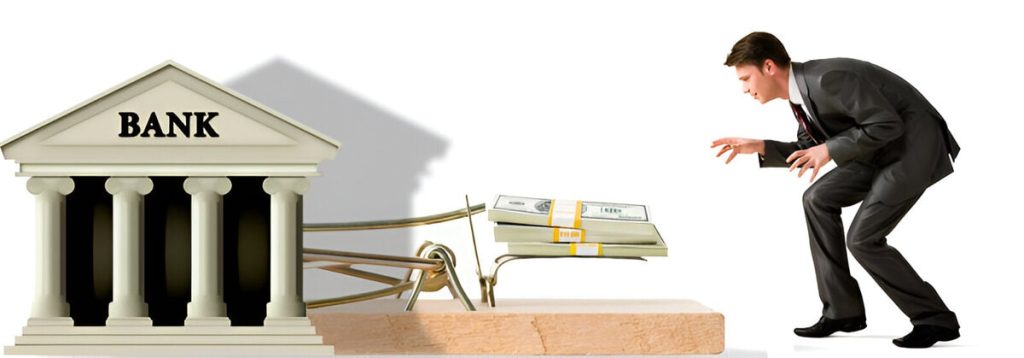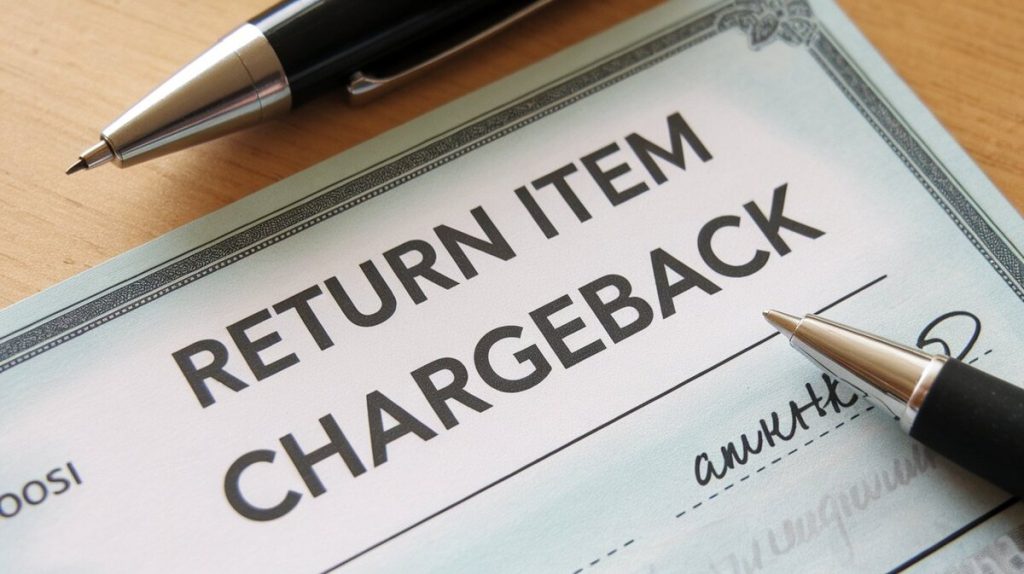Understanding return item chargebacks is crucial for both consumers and merchants. A return item chargeback specifically pertains to banking transactions and differs from the more common credit card chargebacks. This article explains what return item chargebacks are, how they work, and their impact on consumers and merchants.
What Is a Return Item Chargeback?
A return item chargeback occurs when a bank reverses a deposit made by a customer due to a bounced check, insufficient funds, a closed account, or a fraudulent check. This type of chargeback is initiated by the bank when it cannot process the check due to these issues. Unlike credit card chargebacks, which involve disputed transactions, return item chargebacks are strictly related to the failure of a check to clear.
When a customer deposits a check that bounces, the bank reverses the credit from the deposited check and imposes a fee on the depositor. The fee typically ranges from $10 to $20 depending on the bank. Various banks use different terms for these fees, which can create confusion among consumers:
- Bank of America: Deposited Item Returned – $12
- Wells Fargo: Cashed/Deposited Item Return Unpaid – $12
- TD Bank: Cashed or Deposited Item Returned – $15
- Capital One: Rejected Check – $9
How Return Item Chargebacks Work
The process of a return item chargeback is straightforward:
- Check Deposit: A customer deposits a check into their account.
- Check Clearance: The bank attempts to clear the check by debiting the issuer’s account.
- Check Rejection: If the issuer’s account lacks sufficient funds, or if the account is closed or flagged for fraud, the bank rejects the check.
- Chargeback Fee: The depositor’s bank reverses the credit and charges a fee.
This process can cause significant issues for consumers, especially if they were relying on the funds from the check. According to the Federal Reserve, over 500 million checks are processed annually in the U.S., with a notable percentage resulting in return item chargebacks.

Impact on Consumers
Return item chargebacks can be a financial burden for consumers. Beyond the initial fee, a bounced check can lead to overdrafts and additional fees. According to the Federal Deposit Insurance Corporation (FDIC), the average NSF (Non-Sufficient Funds) fee is $33, and multiple bounced checks can quickly add up.
Consumer Tips:
- Monitor Account Balances: Ensure sufficient funds are available before writing checks.
- Set Up Alerts: Use banking alerts to stay informed about low balances and pending transactions.
- Avoid Writing Checks: Use electronic payments that offer immediate balance verification.
Impact on Merchants
Merchants generally do not face direct financial loss from return item chargebacks. However, they might encounter indirect effects. If a customer’s check bounces, the merchant may be left without payment, necessitating further action to collect the owed amount.
While return item chargebacks are mostly a bank-to-consumer issue, confusion can arise. Customers might mistakenly believe the merchant is responsible, potentially harming the merchant’s reputation. To mitigate this, merchants should clearly communicate their payment policies and ensure that customers understand the implications of using checks.
Merchant Best Practices:
- Communicate Payment Policies: Clearly state your policy on check payments and the consequences of bounced checks.
- Offer Multiple Payment Options: Encourage customers to use secure, instant payment methods like credit cards or digital wallets.
- Monitor Customer Payments: Track checks received and promptly follow up if issues arise.
Did you know? Merchanto.org, an official partner of VISA and MasterCard in the chargeback prevention sector, offers solutions to help businesses minimize chargeback risks and enhance transaction security. Learn more at Merchanto.org.
Return Item Chargebacks vs. Payment Chargebacks
Understanding the difference between return item chargebacks and payment chargebacks is critical for both consumers and merchants:
- Return Item Chargebacks:
- Triggered by bounced checks.
- Fees imposed by the bank on the depositor.
- No direct impact on merchants.
- Can lead to further financial penalties like NSF fees.
- Payment Chargebacks:
- Triggered by disputes over credit card transactions.
- Fees imposed on the merchant.
- Direct impact on the merchant’s revenue.
- Can be contested by the merchant through evidence submission.

Table 1: Comparison of Return Item and Payment Chargebacks
| Feature | Return Item Chargebacks | Payment Chargebacks |
|---|---|---|
| Trigger | Bounced checks | Disputed credit card charges |
| Responsible Party | Bank (on the depositor) | Merchant (on the transaction) |
| Fee Range | $10 – $20 | $20 – $100+ |
| Merchant Impact | Indirect | Direct and significant |
| Resolution | Bank fee charged to the depositor | Merchant disputes through card issuer |
Managing Chargebacks
Chargebacks, whether return item or payment-related, can pose challenges for businesses. Implementing best practices can help reduce their occurrence and minimize associated risks:
- Clear Communication:
- Product Descriptions: Ensure that all product descriptions are accurate to prevent disputes over quality.
- Billing Descriptors: Use clear billing descriptors to prevent confusion and disputes.
- Customer Service:
- Multiple Contact Channels: Provide various ways for customers to reach you, including phone, email, and live chat.
- Quick Response: Address customer inquiries promptly to avoid escalation to chargebacks.
- Return and Refund Policies:
- Clearly outline your return and refund policies, including any restocking fees, to avoid misunderstandings.
- Ensure the refund process is simple and straightforward for customers.
- Record Keeping:
- Maintain accurate records of all transactions, communications, and refunds. This can provide crucial evidence if a dispute arises.
Table 2: Best Practices for Chargeback Management
| Best Practice | Description | Expected Outcome |
|---|---|---|
| Clear Communication | Detailed product descriptions and billing descriptors | Reduced disputes and confusion |
| Customer Service | Multiple contact channels, quick response | Higher customer satisfaction |
| Refund Policies | Transparent and easy-to-understand policies | Fewer chargeback disputes |
| Record Keeping | Accurate transaction and communication records | Stronger defense in disputes |
Conclusion
Understanding return item chargebacks is essential for both consumers and merchants. These chargebacks, primarily a bank-to-consumer issue, can cause significant financial strain on individuals if not properly managed. For merchants, while the direct impact might be minimal, clear communication and strong customer service practices are crucial to prevent indirect issues.
Table 3: Return Item Chargeback Fees by Major Banks (2023)
| Bank | Fee Description | Amount Charged |
|---|---|---|
| Bank of America | Deposited Item Returned | $12 |
| Wells Fargo | Cashed/Deposited Item Return Unpaid | $12 |
| TD Bank | Cashed or Deposited Item Returned | $15 |
| Capital One | Rejected Check | $9 |
| HSBC | Chargeback | $10 |



